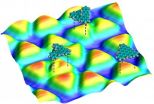Teens' take on bullying
According to young people, individual traits are the main reasons for bullying
2010-11-12
(Press-News.org) Both the bully and the victim's individual characteristics, rather than the wider social environment, explain why bullying occurs, according to Swedish teenagers. The new study, by Dr. Robert Thornberg and Sven Knutsen from Linköping University in Sweden, also shows that 42 percent of teenagers blamed the victim for the bullying. The study is published online in Springer's journal, Child & Youth Care Forum.
In one of the rare studies investigating young people's views on why bullying takes place in school, Thornberg and Knutsen explored how teenagers explain bullying to better understand their actions as participants or bystanders in bullying situations. The authors also looked at whether teenagers attribute bullying to the characteristics of the individuals involved rather than to society in general, whether there are any differences in explanations depending on their own previous bullying experiences, as well as potential gender differences when deciding who is to blame - the bully or the victim.
A total of 176 15- and 16-year-old high school students in Sweden participated in the study. The students filled out a questionnaire asking them about their own school bullying experiences (bystander, victim and/or bully) as well as why they thought bullying occurs.
The authors found that 69 percent of teenagers attributed the cause of bullying to the bully. The bullies' inner flaws (e.g. insecurity and low self-esteem) and their desire to maintain or enhance their power, status, and popularity were the two most common explanations given for why they bullied others. Interestingly, 42 percent of teenagers blamed the victim for the bullying, and their deviance from the norm (e.g. 'different' or 'odd') as the reason why. More girls than boys blamed the bully rather than the victim.
In contrast, only 21 percent of teenagers attributed the cause of bullying to the peer group, 7 percent to the school setting and fewer still to human nature or society in general.
The authors conclude that, "Teenagers explain bullying significantly more in individualistic terms, that is, the bully or victim is to blame, than in non-individualistic terms where peers, school or society are to blame. These findings have important implications for prevention and intervention efforts designed to reduce bullying among children and adolescents. Bullying prevention efforts should investigate and target teenagers' conceptions of the causes of bullying."
INFORMATION:Reference
Thornberg R & Knutsen MA (2010). Teenager's explanations of bullying. Child and Youth Care Forum. DOI 10.1007/s10566-010-9129-z
The full-text article is available to journalists on request.
END
ELSE PRESS RELEASES FROM THIS DATE:
2010-11-12
Electronic components are getting smaller and smaller, with microelectronic components gradually being replaced by nanoelectronic ones. On nanoscale dimensions, silicon, which is at the present stage the most commonly used material in semiconductor technology, reaches however a limit, preventing further miniaturization and technological progress. New electronic materials are therefore in great demand. Due to its outstanding electronic properties, graphene, a two-dimensional carbon network, is considered as a possible replacement. However, several obstacles must be overcome ...
2010-11-12
Fear arises in the almond-shaped brain structure known as the amygdala. It is the amygdala which processes the strange noise, shadowy figure or scary face and not only triggers palpitations or nausea but can also cause us to flee or freeze. That much has long been known about the function of this part of the brain. What remains largely unclear, however, is precisely how fear develops, and which of the countless neurons in the amygdaloid region are involved in this process. But finding answers to these questions is vital for those who wish to improve the quality of life ...
2010-11-12
Spanish and American researchers have conducted a mineralogical and chemical analysis to ascertain the origin of "terra rossa" soil in the Mediterranean. The results of the study reveal that mineral dust from the African regions of the Sahara and Sahel, which emit between 600 and 700 tonnes of dust a year, brought about the reddish soil in Mediterranean regions such as Mallorca and Sardinia between 12,000 and 25,000 years ago.
"The first hint of the relationship between African dust and certain soils in the region of the Mediterranean is their reddish or reddish-brown ...
2010-11-12
MAYWOOD, Ill. -- Alcohol does much more harm to the body than just damaging the liver. Drinking also can weaken the immune system, slow healing, impair bone formation, increase the risk of HIV transmission and hinder recovery from burns, trauma, bleeding and surgery.
Researchers released the latest findings on such negative effects of alcohol during a meeting Nov. 19 of the Alcohol and Immunology Research Interest Group, held at Loyola University Medical Center.
At Loyola, about 50 faculty members, technicians, post-doctoral fellows and students are conducting alcohol ...
2010-11-12
DURHAM, N.C. -- Leaks from carbon dioxide injected deep underground to help fight climate change could bubble up into drinking water aquifers near the surface, driving up levels of contaminants in the water tenfold or more in some places, according to a study by Duke University scientists.
Based on a year-long analysis of core samples from four drinking water aquifers, "We found the potential for contamination is real, but there are ways to avoid or reduce the risk," says Robert B. Jackson, Nicholas Professor of Global Environmental Change and professor of biology at ...
2010-11-12
HOUSTON -- (Nov. 11, 2010) -- Future computers may run a little sweeter, thanks to a refinement in the manufacture of graphene at Rice University.
Rice researchers have learned to make pristine sheets of graphene, the one-atom-thick form of carbon, from plain table sugar and other carbon-based substances. They do so in a one-step process at temperatures low enough to make graphene easy to manufacture.
The lab of Rice chemist James Tour reported in the online version of the journal Nature this week that large-area, high-quality graphene can be grown from a number of ...
2010-11-12
JUPITER, FL, November 9, 2010 – For Immediate Release – Scientists from the Florida campus of The Scripps Research Institute have identified for the first time a novel mechanism that regulates circadian rhythm, the master clock that controls the body's natural 24-hour physiological cycle. These new findings could provide a new target not only for jet lag, shift work, and sleep disturbances, but also for disorders that result from circadian rhythm disruption, including diabetes and obesity as well as some types of cancer.
The study is published in the November 12, 2010 ...
2010-11-12
WINSTON-SALEM, N.C. – Thursday, Nov. 11, 2010 – Arsenic, a toxic compound with a reputation as a good tool for committing homicide, has a significant positive effect on the survival of patients with acute promyelocytic leukemia (APL), when administered after standard initial treatment, according to a new, multi-center study led by a researcher at Wake Forest University Baptist Medical Center.
While arsenic trioxide (As2O3) is known by clinicians to be a highly effective treatment for patients with relapsed APL, its benefit earlier in treatment, after first remission, ...
2010-11-12
INDIANAPOLIS – Researchers report that a drug commonly used to treat diabetes may also retard the growth of fluid-filled cysts of the most common genetic disorder, polycystic kidney disease. PKD does not discriminate by gender or race and affects one in 1,000 adults worldwide.
Researchers from the schools of Science and Medicine at Indiana University-Purdue University Indianapolis and colleagues from the Mayo Clinic report this month in the online peer-reviewed journal PPAR Research that pioglitazone appears to control the growth of PKD cysts.
Using a rat model that ...
2010-11-12
Montreal, November 11, 2010 – People affected by anxiety and depression should receive an additional cardiac test when undergoing diagnosis for potential heart problems, according to a new study from Concordia University, the Université du Québec à Montréal and the Montreal Heart Institute.
As part of this study, published in the Journal of Cardiopulmonary Rehabilitation and Prevention, a large sample of patients received a traditional electrocardiogram (ECG), where they were connected to electrodes as they exercised on a treadmill. Patients also received a more complex ...
LAST 30 PRESS RELEASES:
[Press-News.org] Teens' take on bullying
According to young people, individual traits are the main reasons for bullying



